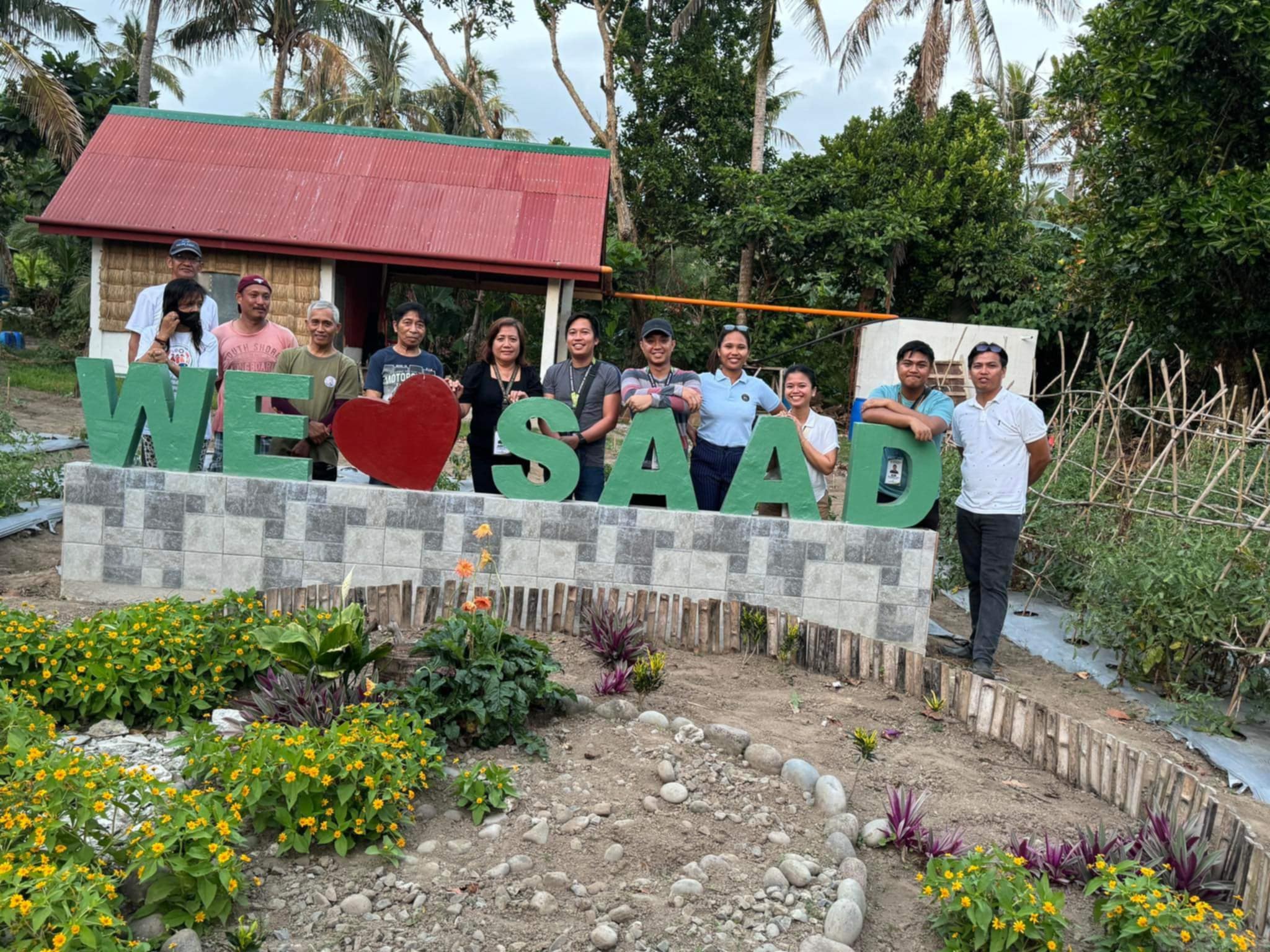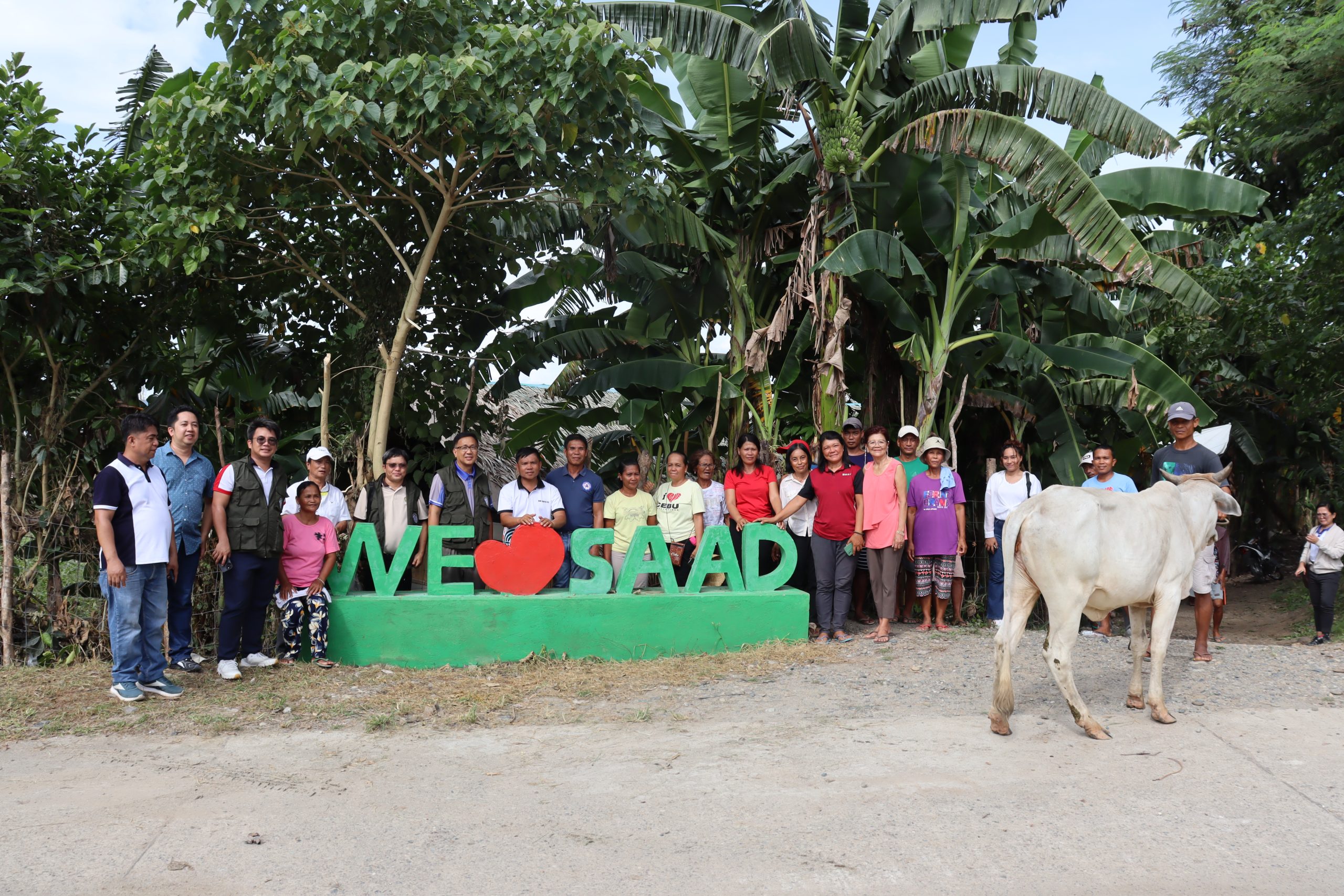Testimonies serve as one of the strongest validations of the effective implementation of government programs. From the early stages of planning and rollout to the time these initiatives are fully embraced and felt on the ground, the beneficiaries are often the first to express how the program has significantly impacted their lives.
In the Department of Agriculture (DA), such events are not new. Farmers have long shared countless stories tied to the success of various programs, projects, and activities. These stories form the basis for strengthening implementation, not just to broaden reach, but to ensure that long-term benefits are achieved.
Under the DA-Special Area for Agricultural Development (DA-SAAD) Program, beyond personal testimonies lies another enduring proof that leaves a legacy in the hearts of farmers, a tangible reminder of how this program became their stepping stone to improved livelihoods – the SAAD Marker. With the simple yet powerful design “I love SAAD,” the marker stands as a symbol of the farmers’ perseverance, the trials they endured, the hope they held on and their journey toward progress.
These markers are installed in the communal gardens of five farmers’ associations: Kayvayvanan Umhakaw Nu Basco (KUNB) Farmers Association in Basco, Batanes; Cabaleng San Isidro Farmers Agriculture Cooperative (CASIFA Coop) in Santa Praxedes, Cagayan; Malaueg Food Producers and Farmers Association (MFPFA) in Rizal, Cagayan; Dur-as Farmers Association (DFA) in San Isidro, Isabela; and La Paz Agriculture and Fishery Farmers Association (LAFFA) in Saguday, Quirino. More markers will soon be installed in other associations, as SAAD currently supports 22 Farmers’ Cooperatives and Associations (FCAs).
Markers show SAAD impact
These markers serve as silent witnesses to how SAAD has empowered farmers, how they have unified, strengthened their organizations, received training, benefited from interventions, and found access to wider markets. The marker also reflects the dedication of SAAD personnel who regularly visit and monitor the beneficiaries, rain or shine, ensuring that each passing day brings the farmers one step closer to their goals.
Despite various challenges such as remote locations, steep terrain, lack of electricity, poor communication signals, and unpredictable weather, SAAD staff remain undeterred in bringing much-needed services to the countryside. The program serves communities in 5th and 6th class municipalities, and in the top one-third of the poorest municipalities in the country. For this reason, SAAD has become one of the government initiatives that reaches the most remote corners of the region.
SAAD reaches remote areas
This commitment was further exemplified during the recent site monitoring of the SAAD National Program Management Office (NPMO) led by National Director Ulysses J. Lustria Jr. and Deputy Director Elmer R. Esplana, joined by Food and Agriculture Organization of the United Nations (FAO-UN) Technical Assistance Coordinators Ms. Ruth Georget and Mr. Ryan Vita. One of their objectives was to identify associations that could be included in the Adapting Philippine Agriculture on Climate Change Program. In their visit, the team successfully gathered needed data from the Gunglo Dagiti Mannalon ti Portugal (GUMAPO) Farmers Association and Cabaleng San Isidro Farmers Agriculture Cooperative (CASIFA Coop), both in Santa Praxedes, Cagayan and the Masi Corn Development Farmers Association (MCDFA) and Malaueg Food Producers and Farmers Association (MFPFA) both from Rizal, Cagayan.
During the visit, farmers could not hide their joy as they expressed heartfelt gratitude for the effort to reach the farmers despite the remote location.
One of those is Malaueg Food Producers and Farmers Association (MFPFA) President Lilibeth Gonzales who voiced, “Napala-os ti panagyamanmi gaputa ta uray nasulinek ti ayanmi ket saan a lapped kadakayo a bisitaendakami tapno laeng makitayo ti kasasaadmi ditoy. Mariknami ti concern-yo kadakami a farmers ket sapaykuma ta saankayo a maum-uma a mangtulongkadakami.”
(We are deeply grateful because, even though our place is remote, it did not become a hindrance for you to visit us and learn about our situation here. We truly feel your concern for us farmers, and we hope you never tire of helping us.)
For SAAD, Ms. Gonzales’ message is like fuel to a burning passion to serve. Interestingly, Rizal is actually the nearest SAAD area from the DA Regional Field Office in Tuguegarao City. There’s also Santa Praxedes in Cagayan at the province’s edge; San Isidro and Luna in Isabela; Saguday in Quirino; the mountainous municipalities of Villaverde and Ambaguio in Nueva Vizcaya; and the island and coastal municipalities of Batanes including Basco, Itbayat, Ivana, and Uyugan.
Legacy of service lives on
Whether near or far, SAAD’s commitment remains and that is to deliver the rightful services to farmers. The SAAD marker stands as proof that even if the time comes when the beneficiaries are transferred to DA banner programs or SAAD Program end in 2028, the memories will remain that once, there was a government program that was highly effective and brought lasting relief to many farmers, especially here in Region 2.
As time passes, from the planting of seeds to the abundant harvests, the legacy of the SAAD Program will live on, marking the journey of farmers who once dreamed of progress, and found it through unity, support, and a government that truly reached out.





